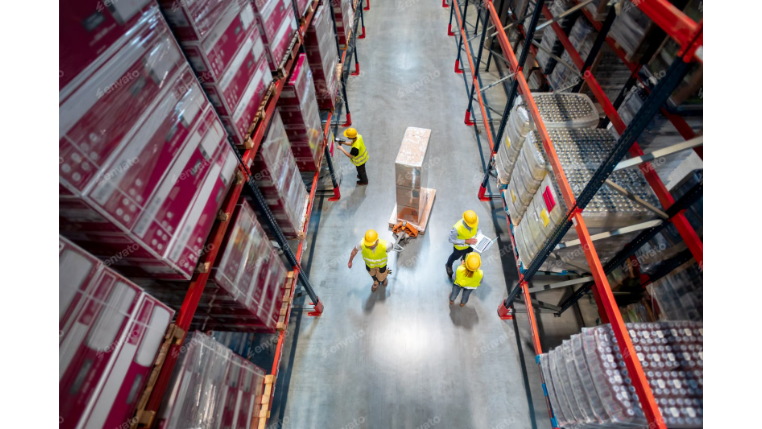The Ultimate Guide to Implementing a Transportation Management System (TMS)
In today’s increasingly complex and fast-moving global market, managing logistics with spreadsheets, phone calls, and endless email chains is no longer sustainable. The demand for speed, visibility, and cost-efficiency has made technology an indispensable ally. At the forefront of this evolution is the Transportation Management System (TMS), a powerful software platform that acts as the central nervous system for your shipping operations. It’s the tool that moves businesses from a state of reactive chaos to one of streamlined, proactive control.
What is a Transportation Management System (TMS)?
A Transportation Management System (TMS) is a logistics platform that helps businesses plan, execute, and optimize the physical movement of goods, both inbound and outbound. It is a specialized software designed to manage the entire transportation lifecycle, from initial planning and procurement to final delivery and analytics. A TMS acts as a single source of truth, connecting shippers, carriers, and customers in a unified digital ecosystem.
The Transformative Benefits of Implementing a TMS
Integrating a TMS is not just an IT upgrade; it’s a strategic business decision that delivers tangible returns across your entire supply chain.
1. Significant and Measurable Cost Reduction
This is often the most compelling benefit. A TMS drives down costs in several key areas:
- Route and Load Optimization: Sophisticated algorithms analyze all possible routes and consolidate shipments (LTL into FTL) to ensure every truck is running the most efficient path with the fullest possible load, drastically reducing fuel and labor costs.
- Automated Carrier Rate Shopping: A TMS allows you to instantly compare rates from multiple contracted carriers for any given load, ensuring you select the most cost-effective option every single time.
- Freight Audit and Payment: It automates the tedious process of auditing carrier invoices against contracted rates, catching and preventing overcharges that would otherwise go unnoticed.
2. Unparalleled Visibility and Real-Time Tracking
A TMS provides a centralized dashboard to monitor all shipments in real-time, regardless of the carrier. This eliminates the need to manually track packages on multiple websites. This end-to-end visibility is crucial for proactive exception management—allowing you to identify a delay and notify your customer before they call you asking where their order is.
3. Enhanced Warehouse Efficiency
A TMS doesn't operate in a silo. It integrates seamlessly with your Warehouse Management System (WMS) to create a more fluid and efficient operation. By providing the warehouse with accurate, real-time data on inbound shipment ETAs, a TMS allows managers to optimize dock scheduling and labor planning. This reduces truck wait times, minimizes congestion at the loading dock, and accelerates the receiving process.
4. Data-Driven Strategic Decision Making
A TMS is a goldmine of data. It captures every detail about your shipping operations—carrier performance, on-time delivery rates, transit times, cost per mile, and more. This data can be visualized in powerful analytics dashboards, allowing you to:
- Identify your most and least reliable carriers.
- Analyze costs by lane to negotiate better contracts.
- Uncover inefficiencies in your network.
Key Features to Look for in a Modern TMS
As of 2025, the market is dominated by flexible and powerful solutions. When evaluating a TMS, look for these essential features:
- Cloud-Based (SaaS) Architecture: This provides scalability, accessibility from anywhere, automatic updates, and a lower total cost of ownership compared to on-premise systems.
- Robust Carrier Integration: The ability to connect easily to your network of carriers via API or EDI is non-negotiable.
- Powerful Optimization Engine: The core of the TMS, this feature should handle complex route, load, and mode optimization.
- Advanced Analytics and Reporting: Customizable dashboards and reports that make it easy to track KPIs and gain actionable insights.
Conclusion
In conclusion, in today's demanding logistics landscape, a Transportation Management System is no longer a luxury for large enterprises—it is a foundational technology for any business serious about efficiency, profitability, and customer satisfaction. It is the key to unlocking a proactive, data-driven operational model that can withstand market volatility and exceed customer expectations.
For businesses looking for a truly holistic solution, platforms like Modaltrans go a step further. They offer a comprehensive, end-to-end logistics ecosystem that integrates core TMS functionalities with freight forwarding, customs, and warehouse modules. This provides a truly unified system that breaks down internal silos and empowers companies with the seamless control and visibility needed to master the complexities of the modern supply chain.










